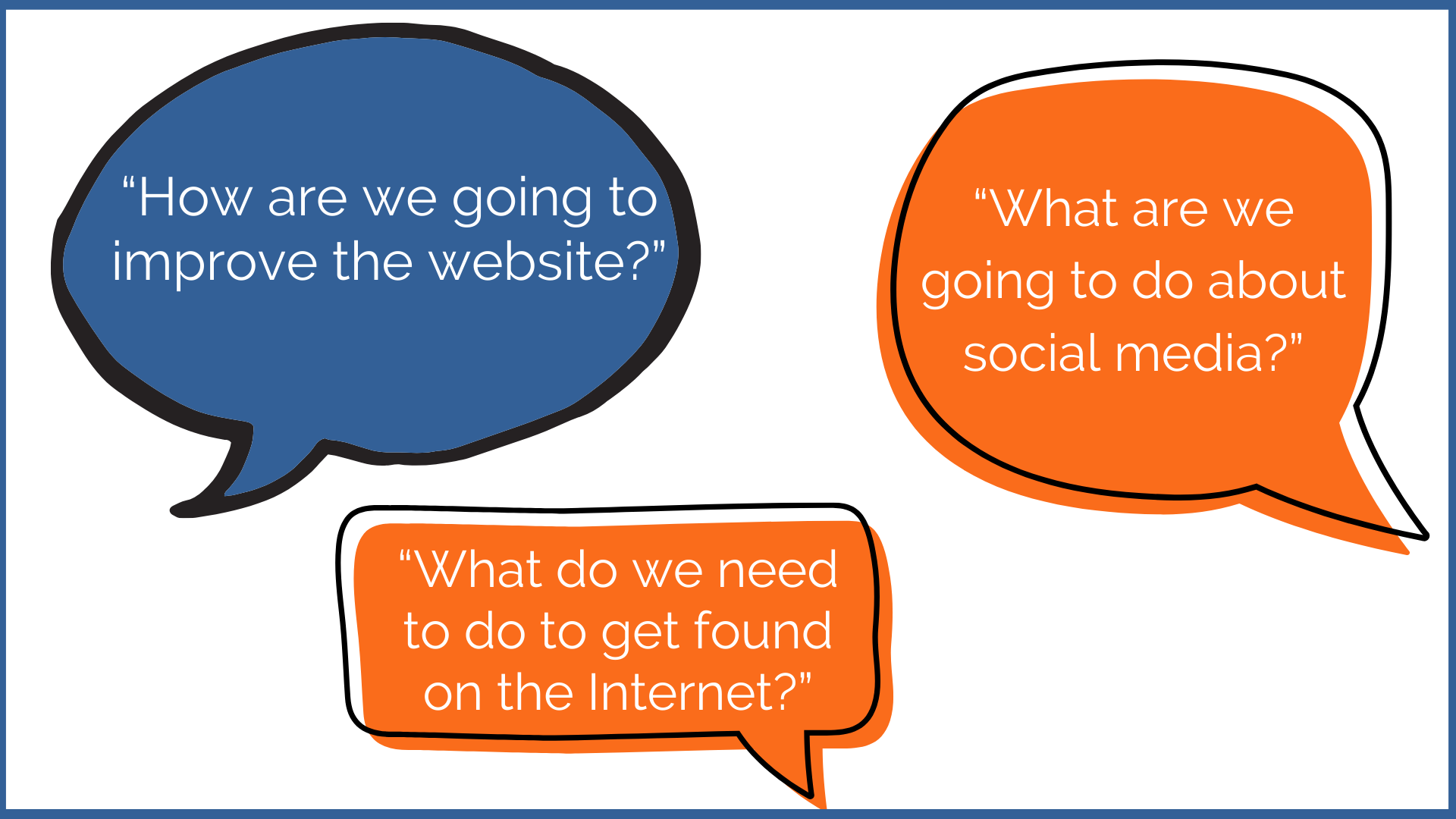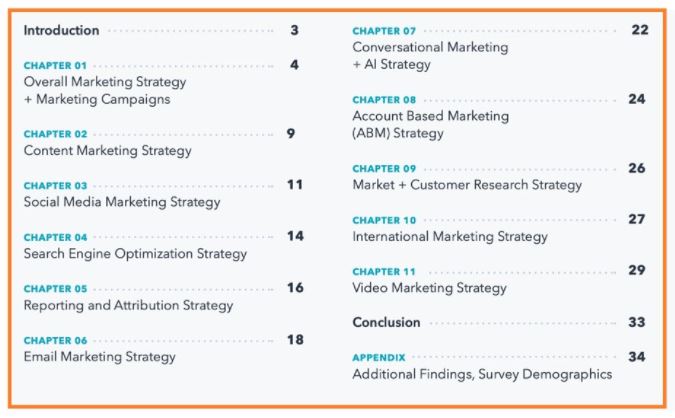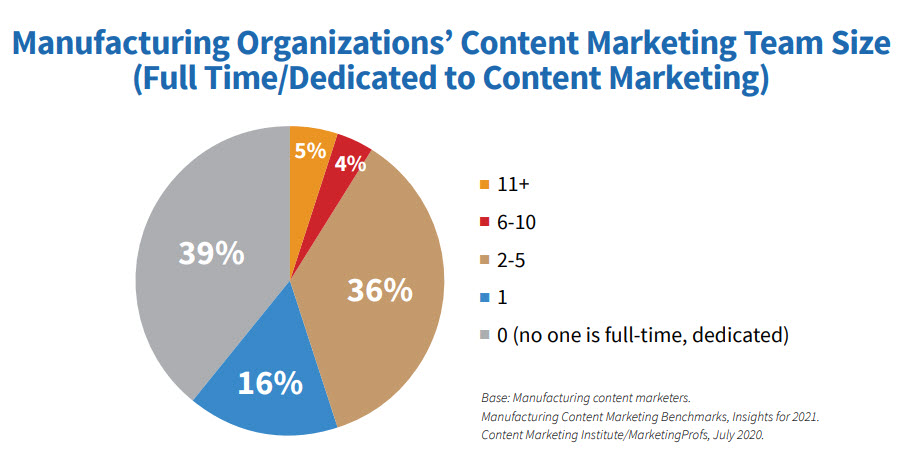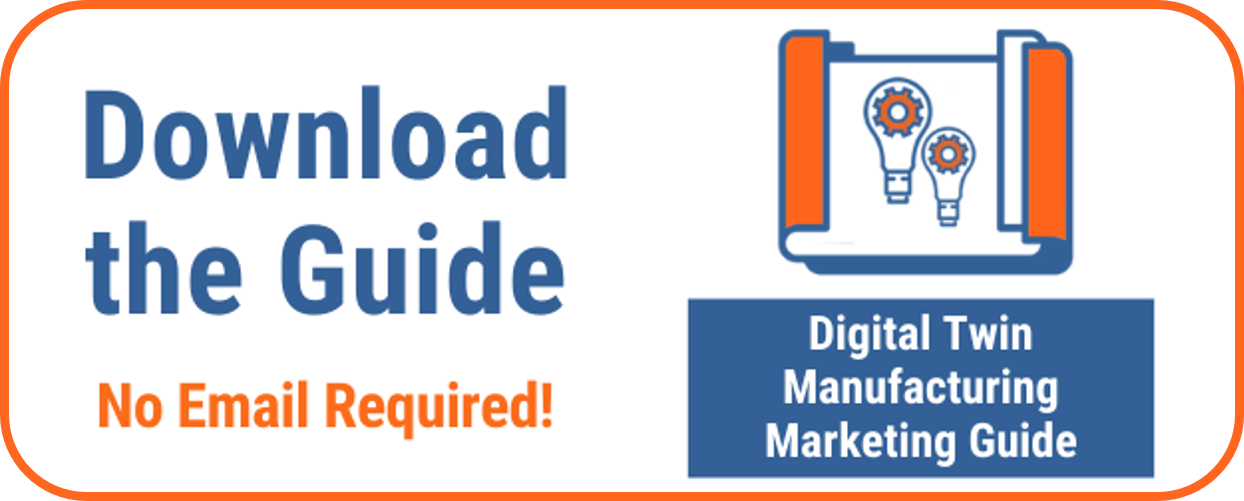The mindset used to be that you needed a marketing department to create a logo, a nice looking website, and a booth at the trade show. But management is seeing research about B2B buyers that’s making them rethink their approach to marketing:
- 70% of buyers fully define their needs on their own before engaging with a sales representative (CSO Insights)
- 44% identify specific solutions before reaching out to a seller (CSO Insights)
- 67% of the buyer’s journey is now done digitally (Sirius Decisions)
Now management is asking their marketing team:

If you’re like most marketers, this is scaring the bejabbers out of you. That’s because the challenge in front of you has become more daunting.
Are you an expert in these 11 different marketing areas?
HubSpot is an organization that helped define Content Marketing. I love the research HubSpot creates, and I’m a big fan of their annual reports on the state of Content Marketing.
I think this snapshot I grabbed from the State of Marketing report sums up the challenge faced by small marketing departments quite nicely. It’s an overview of all the strategies marketers should have on their radar.
Take a look. Do you have all these covered?

Probably not. In fact, if you’re leading a small manufacturing marketing department, I guarantee you don’t. And, if you lead both marketing AND sales, you have even more on your plate.
52% of manufacturers only have one person dedicated to Content Marketing, and 39% have none
The report above breaks out Content Marketing as a stand-alone strategy. I would argue that it overlaps into many of the strategies HubSpot lists. We break Content Marketing down into two areas:
- Content (creating content such as blogs, podcasts, videos, social media posts)
- Marketing (promoting the content through channels such as social media, email, search engines)
That’s a lot to strategize for, much less execute. But take a look at the average size of a manufacturing marketing department dedicated to Content Marketing in the year 2021, based on a study done by the Content Marketing Institute.

The “0” in this case typically would be someone who isn’t dedicated to marketing full time, such as the Director of Sales and Marketing. These poor souls have to manage the sales team AND guide the marketing efforts as well.
Can you manage all of this? In the old paradigm, you were busy enough managing brand, sales collateral, trade show booths, trade pub advertising…but now all this?
No matter how hard you try, I sincerely doubt that you’re going to pull off a sustained digital marketing effort with a marketing department this size. And here’s why.
You’re a generalist in a highly-specialized world. Marketers of small marketing teams tend to be generalists, but things like SEO and social media have led to more and more specialization. Now you’re expected to be a master of all digital marketing tools and tactics, and that’s just not realistic.
You lack time and resources to execute. To succeed in digital marketing, you need content. Content drives digital, and creating it takes time. There’s no short-cutting it, and you need money to pay someone for their time.
You are dealing with a sales-driven culture. Your management team probably doesn’t have a firm understanding of the marketing concepts listed in the HubSpot study. If they’ve never put much effort into marketing, they’ll either hire more salespeople or underfund the new digital marketing effort.
You are overwhelmed by a digital marketing world with too many choices. It’s nearly impossible to keep up with, and often leads to paralysis by analysis. What should you choose? Which will really work? How will you know?
How are you going to answer management’s questions?
Marketing is being called upon to deliver more than ever before. Now you need to deliver on the digital stage, and have the results to prove you’ve reached your goals.
So how do you do it? Here are some ideas to get you started:
Learn the big picture items, but then outsource or hire more staff for the execution. You’re a generalist, so embrace it. Learn how the digital world works so that it’s demystified and not so scary. Then you’ll either need to outsource or hire more staff. (Here’s what you can expect building an in-house marketing team to cost.)
Understanding your strengths as a small marketing department, and playing to them. You can dive into the weeds and execute in areas to save on resources, but do the things you excel at that take little time.
Start your marketing efforts at the bottom of the funnel. When you start at the bottom of the funnel and reinforce the sales team, you can drive more results, which can buy you more time for the long-term marketing channels like SEO and social to pay off
Assess where you are digitally by starting with your website. Your efforts all start with your website. Look at tools like our Content Scorecard (no email required for download) to assess how your website checks out in terms of content and conversion.
Beyond that, you need to explore strategies that work for a team your size. Take a look at our Digital Twin Marketing Strategy for a unique approach tailored to small manufacturing marketing teams.

